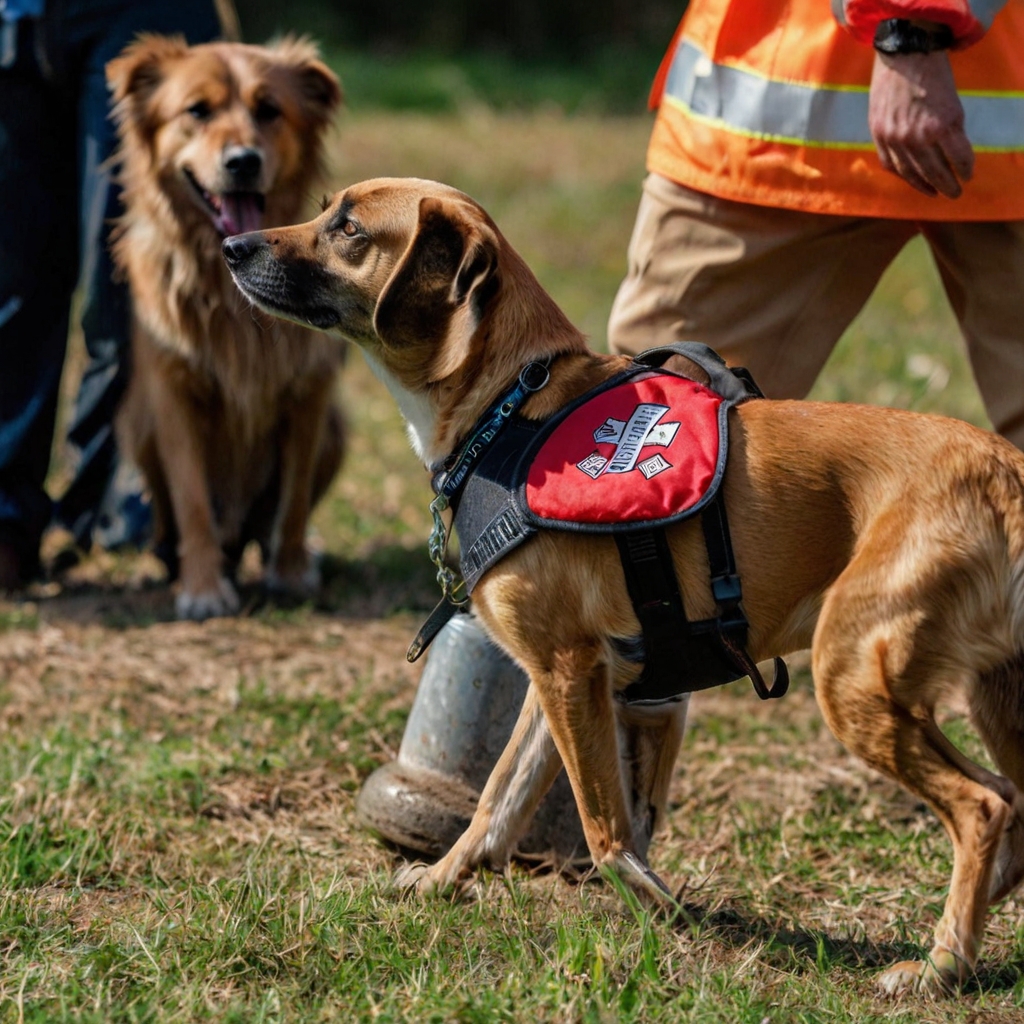Search and rescue operations with rescue dogs are complex and require a high degree of coordination and cooperation among team members. One crucial aspect of these operations is field etiquette, which refers to the set of rules and guidelines that team members must follow to ensure a safe and successful mission. Field etiquette is essential to prevent accidents, maintain a professional image, and uphold the integrity of the search and rescue organization.
Field etiquette during search missions with rescue dogs encompasses a wide range of aspects, from communication and teamwork to safety protocols and environmental awareness. It is essential for team members to understand and adhere to these guidelines to ensure a smooth and effective operation. In this article, we will explore the different aspects of field etiquette during search missions with rescue dogs and provide insights into best practices and protocols.
Introduction to Search and Rescue Operations
Search and rescue operations involve a team of trained professionals, including handlers, searchers, and support staff, who work together to locate and retrieve missing persons or animals. Rescue dogs play a critical role in these operations, using their keen sense of smell and agility to navigate challenging terrain and detect the scent of missing individuals. Search and rescue operations can take place in various environments, including wilderness areas, urban landscapes, and disaster zones.
Communication and Teamwork
Effective communication and teamwork are essential components of field etiquette during search missions with rescue dogs. Team members must be able to communicate clearly and concisely, using standardized terminology and protocols to convey information and coordinate efforts. This includes using radios, smartphones, and other communication devices to stay in touch with each other and with command center personnel. Team members must also be able to work together seamlessly, relying on each other’s strengths and expertise to overcome challenges and achieve the mission objective.
Safety Protocols
Safety is a top priority during search missions with rescue dogs, and team members must adhere to strict safety protocols to prevent accidents and minimize risks. This includes wearing personal protective equipment, such as helmets and first aid kits, and being aware of potential hazards, such as inclement weather, treacherous terrain, and wildlife encounters. Team members must also be trained in first aid and emergency response procedures, including CPR and wound management. The following list highlights some key safety protocols to follow during search missions with rescue dogs:
- Conduct a thorough risk assessment before commencing the search operation
- Use personal protective equipment, such as helmets and first aid kits
- Stay aware of potential hazards, such as inclement weather and wildlife encounters
- Be trained in first aid and emergency response procedures
- Stay in communication with command center personnel and team members
- Avoid taking unnecessary risks and follow established protocols
Environmental Awareness
Search and rescue operations often take place in sensitive or protected environments, and team members must be aware of their impact on the surrounding ecosystem. This includes avoiding damage to vegetation, wildlife habitats, and cultural resources, and minimizing waste and litter. Team members must also be respectful of private property and follow established protocols for accessing and searching private lands. Environmental awareness is an essential aspect of field etiquette during search missions with rescue dogs, as it helps to maintain a positive image and uphold the integrity of the search and rescue organization.
Handling and Care of Rescue Dogs
Rescue dogs are highly trained and dedicated animals that play a critical role in search and rescue operations. Team members must handle and care for these dogs with the utmost respect and attention, ensuring their safety, well-being, and performance. This includes providing regular exercise, food, and water, as well as maintaining a clean and healthy environment. Team members must also be aware of the dog’s limitations and vulnerabilities, including heat stress, fatigue, and health issues, and take steps to prevent or mitigate these risks.
Conclusion
In conclusion, field etiquette during search missions with rescue dogs is a critical aspect of search and rescue operations. It encompasses a wide range of aspects, from communication and teamwork to safety protocols and environmental awareness. By following established guidelines and protocols, team members can ensure a safe and successful mission, while also maintaining a professional image and upholding the integrity of the search and rescue organization. As search and rescue operations continue to evolve and become more complex, the importance of field etiquette will only continue to grow, and team members must remain vigilant and committed to adhering to these essential guidelines.
